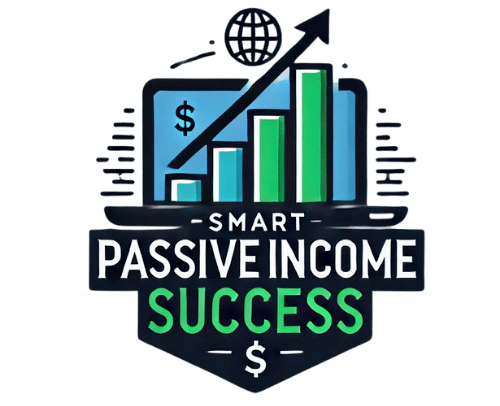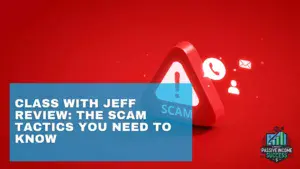I’m going to kick things off by demystifying a term that’s buzzing around the finance world: passive income. At its core, passive income is about earning money without being actively involved in the process, allowing you to cultivate financial independence over time. Consider it as cultivating a garden – you plant the seeds and watch them grow with minimal tending.
You might be wondering how passive income differs from your regular paycheck. Well, active income requires your time and energy—think of your 9 to 5 job. Passive income, on the other hand, is like having a business that runs itself; you put in the work upfront and then let the earnings roll in.
Don’t worry too much about mastering it overnight, though. Establishing streams of passive income often involves research, an initial investment of time or money, and a bit of maintenance.
However once set up, these sources can provide a steady flow of income that contributes to your financial security.
Table of Contents
Assessing the Reliability of Passive Income Sources

You want your passive income to be a sturdy pillar, not a wobbly crutch. So, it’s crucial to sift through the myriad of options with a keen and discerning eye. Let’s kick off by pinpointing some core metrics you can use to evaluate the soundness of a potential passive income source.
Firstly, the track record of the income source should get your attention. Ask yourself, has this opportunity been consistently paying out over the years, or is it a flash-in-the-pan promise? It’s about spotting the difference between a well-established rental property and a high-yield investment program that hasn’t stood the test of time.
Risks come in pairs with rewards, and passive income is no exception. Assessing the risk involves scrutinizing market trends, the volatility of earnings, and being honest about your tolerance for potential financial swings. Adding layers of security through diversification can cushion you from unexpected hits.
Drawing from others’ experiences can be enlightening, too. Is there a chorus of success stories about this passive income type, or are the experiences varied? Real-world examples, from dividend stocks to limited partnerships, can offer you a blueprint of what to expect and which pitfalls to dodge.
Exploring Affiliate Marketing as a Viable Passive Income Channel

If you’ve dipped a toe into the world of passive income, affiliate marketing should ring a bell. Essentially, it’s a performance-based marketing strategy where you promote someone else’s products or services and earn a commission on the sales generated through your referral links.
Now, affiliate marketing is not just about pasting links across your platforms and waiting for magic to happen. The key here is trust. You’ve got to be honest with your audience about your affiliate relationships. Transparency isn’t just ethical; it encourages your audience to use your links, knowing that they’re supporting your efforts.
To begin with, you’ll want to find reputable affiliate programs that align with your niche. This congruence ensures that promotions feel natural instead of forced. Plus, when you’re genuinely enthusiastic about the products, it’ll shine through in your content.
Once you’ve joined some affiliate programs, it’s about strategy. You can use different platforms like a website, social media account, or email newsletter to promote your affiliate products. It’s important to offer genuine value within your content so that it doesn’t come off as a sales pitch. Providing reviews, comparisons, and how-tos related to your affiliate products can work wonders.
Affiliate marketing does require upfront effort – you need to build an audience and cultivate a sense of community. Patience is crucial, as your affiliate income will typically grow as your audience grows.
The beauty of affiliate marketing lies in its scalability. Once your affiliate links are in place and generating income, they can continue to do so with minimal additional work. This sets it up perfectly to transition into our next topic: blogging.
The Power of Blogging: Turning Content into Cash Flow

You’re probably familiar with blogging, but have you considered its potential to generate passive income? Blogging is about sharing your knowledge, passions, or experiences with the world, and with the right approach, it can become a source of regular income.
To start your blogging adventure, you’ll need to choose a niche that resonates with you and your intended audience. Remember, authenticity is key; your readers will return for your unique voice and insights. Once you’ve established your niche, create valuable content that helps solve problems or answers questions—content that people are actively searching for.
To turn a profit from your blog, consistency and quality are non-negotiable. You can’t just put out content sporadically and expect to build a following. Set a content schedule and stick to it, ensuring that each post maintains a high standard. Over time, your reliability and the quality of your output will help build an engaged audience.
Monetizing your blog can take several forms. You might start with placing ads that generate revenue based on traffic or clicks. Alternatively, consider giving sponsored content a go, where businesses pay you to write about their products or services—just be sure to disclose these relationships to your audience to maintain trust.
Merchandising can also add to your income. If your blog builds a loyal following, branded merchandise or the sale of digital products related to your niche, like e-books or courses, can be a big hit. Remember, diversification helps protect against income fluctuations and keeps your blog financially healthy.
Turn Your Passion into Profits
Conclusion: Integrating Multiple Passive Income Streams for Stability

You’ll find out about the smart strategy of diversifying your passive income. This isn’t just about focusing on one stream; it’s vital to spread the risk and potential for earnings across different areas.
In my opinion, a mix of assets like real estate, stock dividends, online ventures, affiliate marketing, and blogging can create a well-rounded portfolio that works for you even while you sleep.
Remember, it’s okay to start small. Choose something that resonates with you, one that you can manage alongside your active income sources, then expand as you become more comfortable. Your first attempt doesn’t need to be your last.
Don’t worry too much about mastering everything all at once. Developing passive income is a learning process, and you can always adjust your approach down the road as you gain more insight and experience.
I hope that you’ve found this guide helpful and that it’s given you a clear direction on where to start. There’s a lot of opportunity in passive income, and I’m here to help you along the way. Thanks for reading, and I’d love to hear your feedback. Ready to take the next step toward financial freedom? Let’s make it happen.






